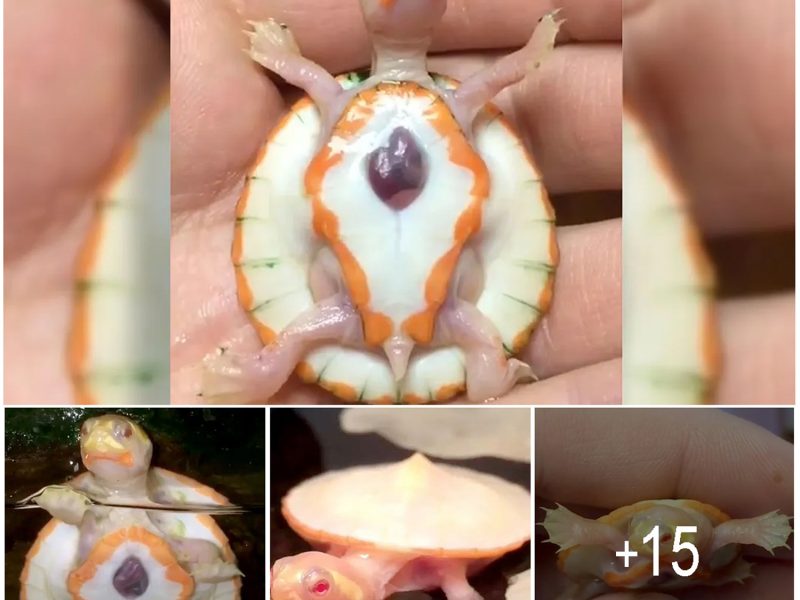The Rivoli’s hummingbird, a large, flashy native to the American southwest, is easy to spot with its trademark purple cap.
It likes to hang out at higher elevations, between 5,000 and 9,000 feet, but is spotted in shady canyons and pine forests.
The Rivoli’s hummingbird has gone through a few name changes. A previous one, the magnificent hummingbird, speaks to its size and splendor.
Let’s look at 13 reasons why the Rivoli’s hummingbird is so magnificent.
1. Rivoli’s Hummingbirds’ Name Changes
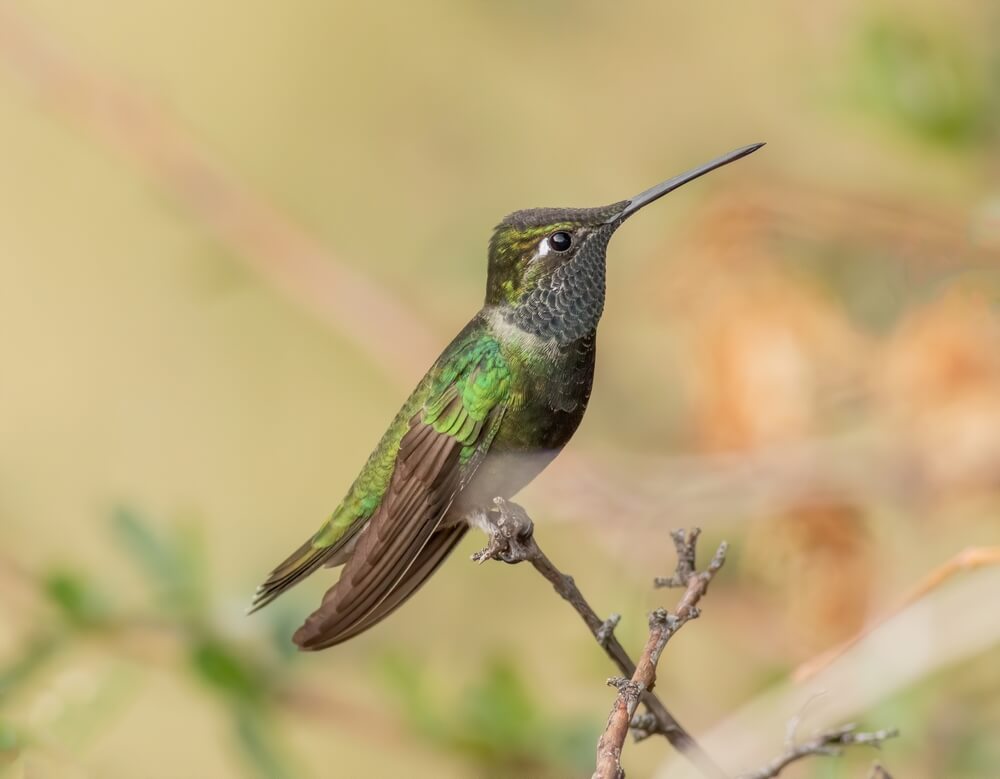
Today, this bird is called the Rivoli’s hummingbird in honor of an amateur ornithologist, the second Duke of Rivoli, but in 1983, it was renamed the magnificent hummingbird, a fitting name for this large and majestic hummer.
But the name later reverted to Rivoli’s hummingbird.
Still, many bird watchers continue to call them “mags”.
2. The Heart Of The Rivoli’s Hummingbird Beats Crazy Fast
With about 1,200 beats per minute, the Rivoli’s hummingbird has one of the highest heart rates in the animal kingdom.
By comparison, a spider monkey has a heart rate of 350, a red-tailed hawk has a heart rate of 200, a dog has a heart rate of 80, and a blue whale has a heart rate of 33.
3. Rivoli’s Hummingbirds Are Slow Flappers

Most hummingbirds flap their wings so fast that, to the human eye, they are a blur. In fact, the average wing speed of the hummingbird family is about 70 beats per second.
But not the Rivoli’s hummingbird.
The Rivoli’s hummingbird flaps its wings so slowly that humans can see the movement. Their wing speed is between 20 and 35 beats per second. They’ve even been spotted gliding.
4. Rivoli’s Hummingbirds Are Teal, Turquoise & Purple
The feathers of the Rivoli’s hummingbird are iridescent and shimmer in the sunlight. The teal-green bodies have a bronze-like sheen, tapering down to their black tails. The throat of the bird is bright turquoise in color.
The top of the Rivoli’s hummingbird’s head is iridescent purple. Females are duller in color and have a strip of white feathers behind their eyes.
5. Rivoli’s Hummingbirds Are Quite Large

The Rivoli’s hummingbird is the second-largest hummingbird species in the United States. It is second only to the blue-throated hummingbird, a bird that shares its territory.
On average, the Rivoli’s hummingbird is between 4.3 and 5.5 inches in length, although the males are slightly bigger than the females. The birds have a wingspan of more than seven inches and can tip the scales at up to .35 ounces.
6. Rivoli’s Hummingbirds Have A Complex Relationship With Other Hummingbird Species
Since the Rivoli’s hummingbird shares its territory with the larger blue-throated hummingbird, it tends to sit back and let the bigger blue-throated hummingbirds be the dominant species.
When the Rivoli’s hummingbirds migrate south into Mexico where they coexist with smaller hummingbird species, like the berylline hummingbird, the bumblebee hummingbird, and the amethyst-throated hummingbird, it becomes the dominant bird.
7. Rivoli’s Hummingbirds Are Aggressive, But Only When They Want To Be
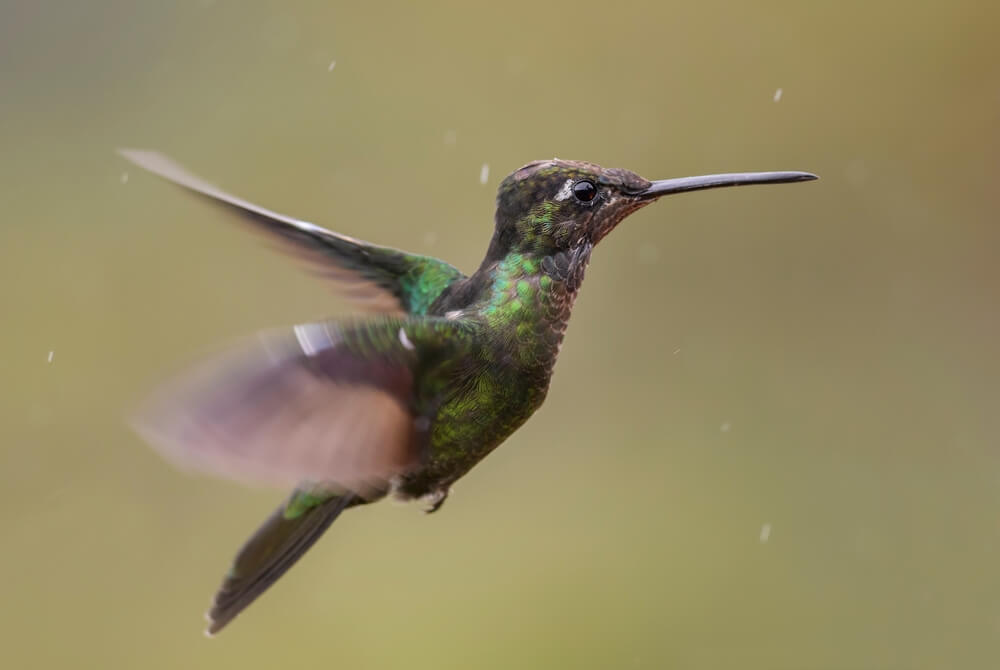
The Rivoli’s hummingbird is not necessarily an aggressive bird. It will not generally pick a fight with other birds.
However, they will fiercely defend their favorite patch of flowers, garden, or feeder. They will even chase off the bigger blue-throated hummingbirds to protect their feeding ground.
8. Most Often, Rivoli’s Hummingbirds Eat In Flight
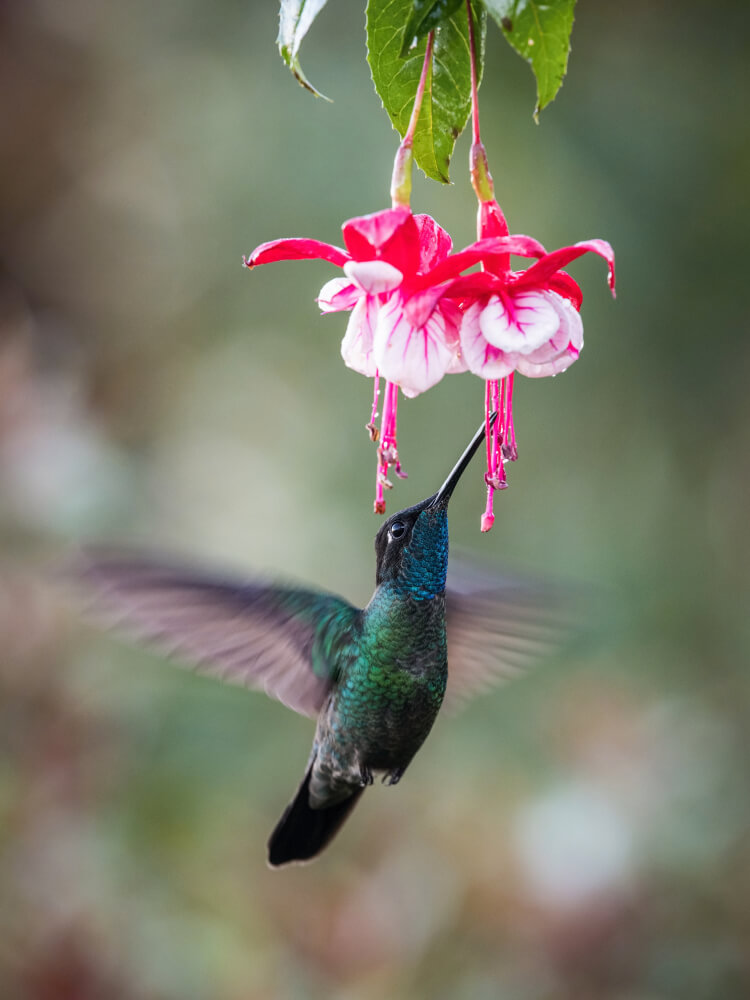
Rivoli’s hummingbirds are hover feeders. When they find a delicious flower, they will hover over it while lapping up the nectar. They will also catch flying insects in the air.
A frequent visitor to residential hummingbird feeders, the Rivoli’s hummingbird typically hovers as it feeds, only occasionally using the perches.
Rivoli’s hummingbirds have also been observed dining on spiders and stealing spiders’ meals. They will pluck insects that get stuck in spider webs, getting to the prey before the spider can.
9. Rivoli’s Hummingbirds Breed In The Mountains And Timberlines
During breeding time, Rivoli’s hummingbirds head for the hills. In the southwestern U.S., it makes its nests in higher elevations, up to 5.000 feet. It can be found in pine and oak forests and tree lines.
In Central America, Rivoli’s hummingbirds inhabit the cloud forests of Nicaragua and Honduras during the breeding season.
10. The Male Rivoli’s Hummingbirds Are The Most Vocal
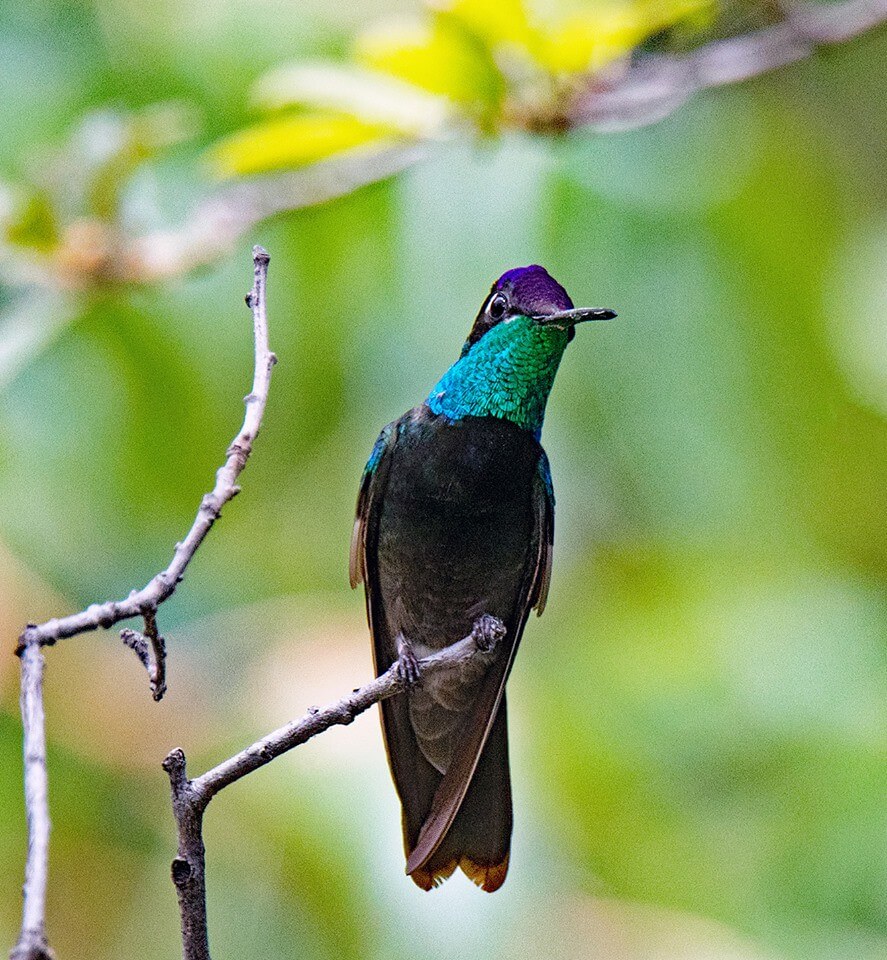
The vocalizations of the Rivoli’s hummingbird include high-pitched calls and lower chatters. The males are more vocal than the females.
During courtship rituals, the male Rivoli’s hummingbird sings to his mate, emitting “t-cheap, t-cheap” sounds. When aggressively defending his territory or chasing away rival males, he will show his anger with a series of rapid-fire chirps.
11. Female Rivoli’s Hummingbirds Use Spider Webs To Build Their Nests
Nest-building duties fall exclusively to the female Rivoli’s hummingbirds.
She will locate a spot high in a tree, sometimes up to 55 feet above the ground, where branches form a crotch. There, she will use spider webs to hold together moss and plant material in the shape of a cup.
To keep the nest hidden from predators, the female Rivoli’s hummingbird will camouflage it with moss or leaves. She lines the interior of the nest with soft feathers or downy plant material.
12. Rivoli’s Hummingbirds Have Twins
Almost always, the female Rivoli’s hummingbird will lay two eggs in her cup-shaped nest. She is the only parent to incubate and tend the nestlings. The twin eggs hatch after about 15 to 18 days.
She feeds her young a regurgitated mixture of nectar and digested insects. She sticks her long bill into her babies’ mouths to feed them. After about 25 days, the young are ready to leave the nest.
13. Rivoli’s Hummingbirds Can Cross-Breed

It doesn’t happen very often, but the Rivoli’s hummingbird can hybridize with other hummingbird species living in its neighborhood, including the blue-throated hummingbird, the berylline hummingbird, the violet-crowned hummingbird, and the broad-billed hummingbird.
Hybridized Rivoli’s hummingbirds take features from both parents. The result is a strange-looking bird … and one that occasionally baffles biologists and bird watchers.”
